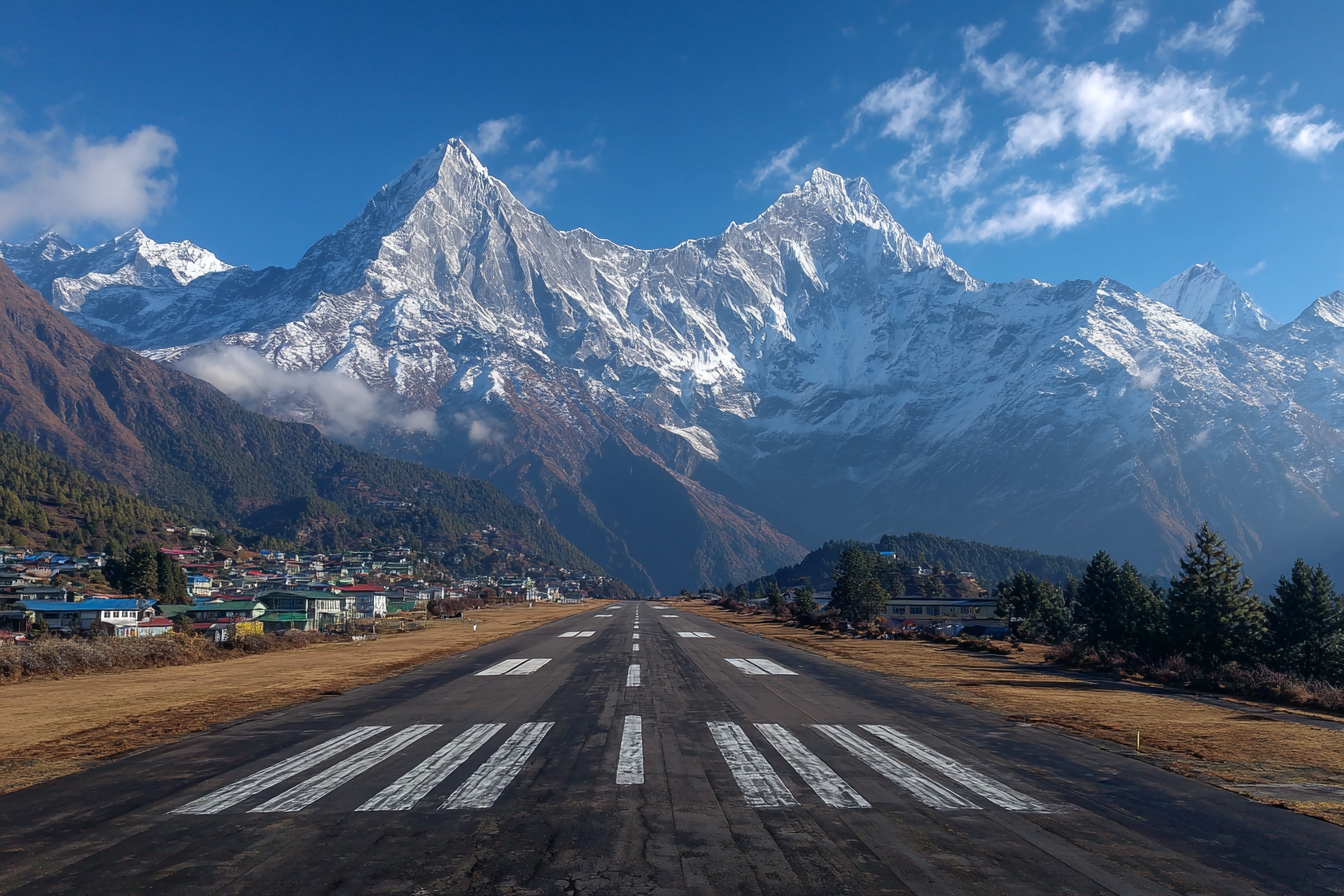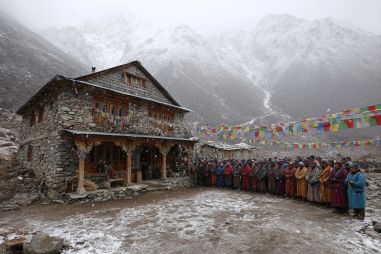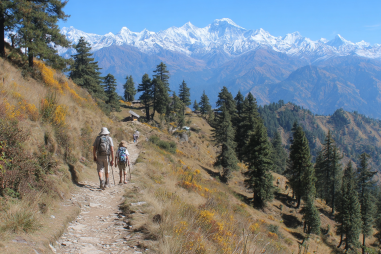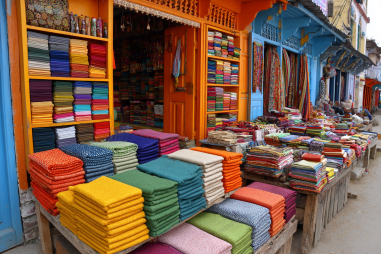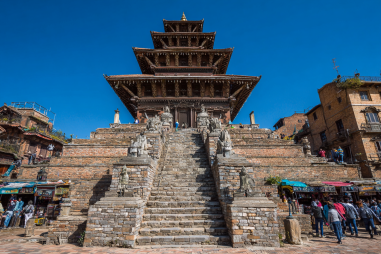Lukla Airport, officially known as Tenzing-Hillary Airport, holds a legendary status among adventure travelers and aviation enthusiasts alike. Perched high in the Himalayan mountains of Nepal, this small yet iconic airport serves as the main gateway to the Everest region. For those planning a trek to Mount Everest Base Camp or other breathtaking nearby trails, understanding what to expect when flying into Lukla is essential. This guide covers everything from the unique features of Lukla Airport, booking tips, safety considerations, and useful travel advice to ensure your journey starts on the right note.
Introduction to Lukla Airport
Lukla Airport is located in the town of Lukla, at an elevation of approximately 2,860 meters (9,383 feet) above sea level. This airport is renowned for its short and steep runway, framed by dramatic mountain terrain and unpredictable weather conditions. Named after Sir Edmund Hillary and Tenzing Norgay, the first climbers to summit Mount Everest, Lukla Airport plays a crucial role in Nepal’s trekking industry.
Each year, thousands of trekkers fly into Lukla to begin their Himalayan adventures. While the surrounding scenery is breathtaking, the airport’s location and layout make it one of the most challenging in the world for pilots. This has earned Lukla a reputation both for its beauty and its inherent risk, making preparation and understanding vital before booking your flight.
Unique Features and Challenges of Lukla Airport
Several aspects make Lukla Airport distinct from most others around the globe:
- Short Runway: The runway is just 527 meters (1,729 feet) long, which is extremely short compared to most commercial airports. Adding to the difficulty is the runway’s sloped incline of 12%, which helps planes stop faster upon landing but requires precision from pilots.
- Mountainous Terrain: Lukla sits in an area surrounded by towering peaks. The approach involves navigating narrow mountain passes, often with limited visibility due to clouds or rapidly changing weather.
- Unpredictable Weather: The weather can change quickly, causing visibility issues and sudden gusts. Fog, rain, snow, and strong winds frequently challenge both pilots and travelers.
- No Instrument Landing System (ILS): Lukla Airport operates mainly under Visual Flight Rules (VFR), meaning pilots rely heavily on clear weather and good visibility for safe flights.
These factors mean pilots landing and taking off from Lukla require special training, experience, and skill, underscoring the adventurous nature of flights in and out of this airport.
How to Book Flights to Lukla
Booking flights to Lukla typically involves flying from Kathmandu’s Tribhuvan International Airport to Lukla’s Tenzing-Hillary Airport. Several local airlines operate multiple daily flights during the trekking season, including Yeti Airlines, Tara Air, and Summit Air.
Here are some tips for booking your flight:
- Book Early: Seats fill up quickly, especially during peak trekking seasons (spring and autumn). It’s wise to book your flight as soon as your itinerary is confirmed.
- Be Flexible: Weather can cause cancellations and delays, so allow extra days in your schedule to accommodate possible changes.
- Use Trusted Airlines: Choose reputable airlines known for safety and punctuality. Reading current traveler reviews can provide insight into service quality.
- Consider Package Deals: Many trekking operators include Lukla flights in their package, simplifying the booking process.
While some visitors try to book tickets upon arrival in Kathmandu, it is highly recommended to make your reservation in advance, especially in the high season, to avoid disappointment.
Best Times to Fly In and Out
The best times to fly into Lukla align closely with the trekking seasons, when weather conditions are most favorable:
- Spring (March to May): Offers warmer temperatures, clear skies, and vibrant rhododendron blooms.
- Autumn (September to November): Known for stable weather and excellent mountain visibility, making it the most popular season for trekking.
Flights in winter (December to February) or monsoon season (June to August) are less frequent or may be canceled frequently due to snow, heavy rain, and poor visibility. Avoiding these periods reduces the likelihood of flight delays and cancellations.
Safety Considerations and Flight Delays
Lukla Airport’s challenging conditions mean safety is the highest priority for airlines and pilots. Flights are often delayed or canceled to avoid unsafe conditions. Some important safety considerations include:
- Flights typically operate only during daylight hours and in good weather conditions, so arriving well before dark is crucial.
- Pilots will assess real-time weather and make judgment calls on whether to land or postpone flights.
- Flight cancellations are common during the monsoon season, and backup plans are essential.
- Passengers are advised to pack light due to weight restrictions on small aircraft.
While you might find delays frustrating, these are necessary precautions to ensure traveler safety. Many trekkers build extra days into their itinerary to accommodate such delays without stress.
Alternative Travel Options
If flying isn’t suitable or you prefer an alternative route, there are options, although they require more time and effort:
- Trek from Jiri or Salleri: Traditionally, trekkers started from these towns, journeying over several days to reach Lukla on foot. This option is more physically demanding but offers a gradual acclimatization experience and an immersive introduction to the region.
- Helicopter Services: For travelers seeking quicker and more flexible access, helicopters can be chartered. However, these tend to be significantly more expensive.
Most visitors, however, choose the short flight to Lukla given the convenience and spectacular views from the air.
What to Expect on Arrival
Upon landing at Lukla Airport, expect a small, bustling terminal with a friendly but busy atmosphere. Here’s what usually happens:
- You’ll disembark directly onto the tarmac due to the airport’s limited infrastructure.
- Trekking companies and porters often meet arriving guests here, especially during peak season.
- A small market area and several lodges offer basic refreshments and gear if needed.
- The town itself is compact but geared toward trekkers, with guesthouses, restaurants, and supply shops.
The adrenaline rush from the landing experience quickly gives way to a sense of awe over the Himalayan landscape. The town’s altitude means you should take time to acclimatize, hydrate, and prepare for trekking ahead.
Tips for Travelers Flying to Lukla
To make your flight to Lukla as smooth and enjoyable as possible, consider the following tips:
- Arrive Early at Kathmandu Airport: Flights to Lukla depart early in the morning, often as early as 6 AM. Arriving early ensures you don’t miss your flight and allows flexibility in case of last-minute changes.
- Travel Light: Weight restrictions are strict; pack only essentials and distribute weight evenly.
- Dress Warmly: Weather can be chilly on arrival, so layers are advisable.
- Bring Snacks and Water: Airport shops are limited, so be prepared especially for delays.
- Be Patient and Flexible: Flights can be canceled or delayed due to weather. Building extra buffer days into your itinerary avoids stress.
- Respect Local Customs and Environment: Lukla is a small community. Being courteous to locals and trekkers helps keep the atmosphere positive.
Lastly, savor the experience. Flying into Lukla is a one-of-a-kind adventure that kicks off some of the most beautiful trekking routes in the world.
Setting Off on Your Himalayan Adventure
Flying into Lukla Airport is more than a transfer – it’s an adventure in itself. Though it presents unique challenges with its mountainous terrain, short runway, and changeable weather, careful planning and preparation can ensure a smooth and safe journey. Whether you are a seasoned trekker or a first-time visitor, your arrival at Lukla marks the beginning of an unforgettable experience in Nepal’s majestic Himalayas.
Keep weather conditions in mind, book your flights early, and remain flexible to delays. Pack smart, stay patient, and immerse yourself in the thrilling atmosphere of this exceptional gateway to the Everest region. With these insights, you’ll be ready for a trip that’s as exciting in the air as it is on the trail.

